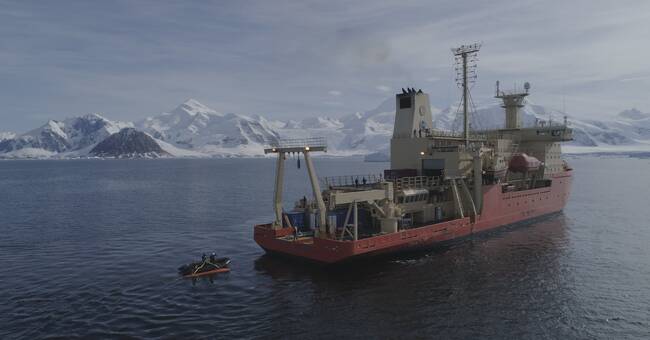The West Antarctic coast is probably the world's most inaccessible place.
It is a two-week boat trip from the tip of South America.
There are several huge glaciers that flow several kilometers above sea level, so-called shelf ice.
The Thwaites Glacier, which some researchers call the "Doomsday Glacier", is one of the largest and is as large as the whole of Great Britain.
In recent decades, satellites have revealed that they are melting ever faster and at regular intervals icebergs calve larger than Gotland.
The glaciers in this part of Antarctica hold so much ice that the sea would rise two to four meters, within a few hundred years, if everything melted.
- There is potential for a rapid rise in water levels.
If it goes as fast as the worst-case scenarios, then it is "doomsday", says Anna Wåhlin, professor of oceanography at the University of Gothenburg and veteran of Antarctica.
Sits like a stopper
But the question is how fast it can go.
The floating shelf ice at the edge of the glaciers acts as a kind of plug that slows down the flow of glaciers towards the sea.
If the shelf ice breaks quickly, the plug "goes out" and the risk is that the glaciers rush out into the sea and raise the sea level.
During February and March this year, the Thwaites Glacier was the target for a group of Swedish researchers.
With them on the British icebreaker, they had a completely self-propelled underwater robot.
With the help of it, they managed for the first time ever to examine what it looks like under the ice.
- Yes, it's fantastic!
We were really first.
There has been no boat here before because it has always been covered in thick ice and icebergs.
We were the first ship to be there and Sweden was the first to send in a measuring instrument under Thwaite's glacier, says Anna Wåhlin.
The Swedish researchers at the underwater robot Ran after the successful dive March 1, 2019. Photo: Carolyn Beeler
Unique measurements
The robot Ran was sent into the pitch darkness where it cruised under the 500 meter thick ice for 23 hours.
- What made us nervous on board was that if something happens to it, it's over.
The only thing we know is that it will not come back, so it was very nervous.
Warmer water flows in and melts the ice from below. The robot measured the sea depth to between 1500-2000 meters under the 500 meter thick ice.
The robot measured water temperature, salinity and much more and scanned both the bottom and the underside of the ice with advanced sonar.
How deep it is and what it looks like was completely unknown.
The robot documented geological traces at the bottom that show how large the glaciers were earlier in history, which can provide clues as to how they will react in the future.
Melts from below
The researchers were also able to show that slightly warmer water flows in and melts the glacier from below.
This causes it to retreat.
This is the key to understanding how stable the glaciers are and how much the sea will rise in the future.
- How fast it can go is the big question, not really how much it can rise.
Even if it is only 20 centimeters and it goes fast, it would be catastrophic for some parts of the earth.
The driverless submarine also took water samples to be examined for DNA.
It can show which organisms are in the dark.
- It is a mystery, how can things live there, says Anna Wåhlin who thinks that sediment from the glacier may be food for bacteria.
Major investment in Antarctica
Exactly how Antarctica is affected by a warmer climate on earth is unclear, says Anna Wåhlin.
It is difficult and expensive to do research there and there is a lack of measurements for a long time.
Questions that stifle answers are whether it will snow more or less and what the increased air temperature means when it is already so cold.
But the most important thing is to find out how fast the glaciers are melting from below.
So in addition to Sweden, several countries such as the USA and the UK are now investing heavily in understanding what can happen to Antarctic glaciers.
- It is understandable, we will have an answer within ten years, says Anna Wåhlin.

